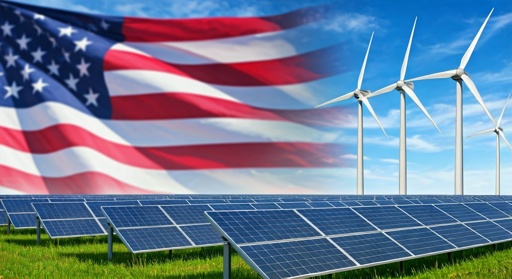Renewable energy is catching up in red states, potentially bolstering IRA incentives
October 23, 2024

© Shutterstock
Climate change and renewable energy remain polarizing topics among politicians—at least on paper. New analysis from the Environment America Research & Policy Center suggests Republican-leaning states are deploying clean energy with increasing speed.
The longstanding gap between Democratic- and Republican leaning states’ adoption of clean energy resources has narrowed considerably, likely driven at least in part by the incentives created under the Inflation Reduction Act, according to Johanna Neumann, senior director of the campaign for renewable energy at Environment America. Texas is now the nation’s top state for renewable energy development, and although California still ranks second, Iowa, Oklahoma and Kansas round out the top five, she said.
Increased renewable energy adoption hasn’t necessarily shifted national opinions on climate policy, with Republican support for climate action trailing Democrats by 38 percentage points, according to polling from Stanford University and Resources for the Future. That’s the largest gap recorded by the Stanford poll, which dates back to 1997.
But there are some areas of agreement, according to the Stanford poll. A majority of Democrats, Republicans and Independents all agree on the need to reduce emissions from power plants and to provide more tax breaks for utilities to make electricity from renewable energy resources.
That may not bode well for politicians who continue to call for the repeal of the Inflation Reduction Act (IRA), Neumann said. The national budget and tax policy will likely make the political agenda next year, she said, and it’s likely that Republicans will want to revisit the Inflation Reduction Act. But it’s looking increasingly less likely that they will repeal IRA incentives for renewable energy given the economic benefits they have brought to key Republican-leaning states, she said.
Shifting National Trends
Much of the recent shift in renewable energy adoption trends can be explained by increased growth in Southeastern states, Neumann said. Once the last renewable energy holdout, states like Alabama, Florida and Mississippi are now adopting technologies like rooftop solar and home batteries in record numbers, she said.
Increased incentives and decreased costs likely account for much of this trend, Neumann said. But Environment America has also noted growing interest in energy independence and resilience in the wake of increasingly severe weather and natural disasters.
“I’m hearing stories of folks in the Appalachians, in North Carolina, who had solar and storage, who were able to weather the storm and keep the lights on, and create local hubs where neighbors could come over and charge their phones and be able to maintain lifesaving medical equipment,” she said. “So in an era where extreme weather events are likely to get worse before they get better, being able to harvest the sunshine and power your life regardless, is going to be seen as a benefit that people want.”
The growth of energy storage around the nation, Neumann noted, has been particularly striking, with total battery storage capacity growing from just 1.53 gigawatts (GW) in 2020 to 15.51 GW in 2023.
Electric vehicle (EV) adoption has posted a similarly dramatic growth curve in recent years, with more than 3 million EVs on the road today compared to just 1 million in 2020, and less than 400,000 in 2017, according to Environment America.
These growth curves hold true—and are in some cases even more dramatic, in traditionally red states, according to Environment America. Electric vehicle adoption grew more than 300% in Alabama between 2020 and 2023, while California posted a 177% increase in the same time frame.
This growth hasn’t completely resolved the tension around siting utility-scale renewable energy projects, which remains a barrier to deployment in many states, Neumann said. But it could create a virtuous cycle by which people become more accustomed to—and thus willing to support—clean energy projects, she said.
Mixed-use solutions like agrivoltaics and the adoption of standardized permitting could also go a long way toward promoting the growth of renewable energy, Neumann said.
“The benefits [of renewable energy] are far-reaching, and while Republicans might point to other reasons than hard-core environmentalists, the benefits are still real,” Neumann said. “Clean energy technology doesn’t have to be, and cannot be, pigeon-holed into a political block.”
Search
RECENT PRESS RELEASES
Related Post


